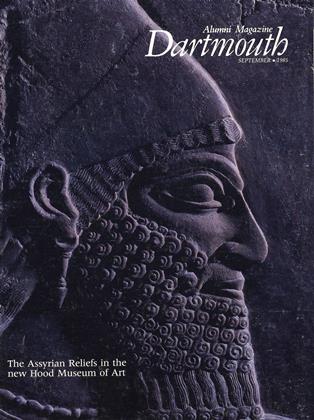Professor Emeritus Joseph J. Ermenc, ATOMIC BOMB SCIENTISTS: MEMOIRS 1939-1945, Meckler Publishing, 1984, 6 microfiche, $48.00. Between 1967 and 1970, Professor Ermenc interviewed nine scientists and administrators involved in the development of nuclear energy during World War II, not just in this country, but overseas as well. These included Werner Heisenberg and Paul Harteck, who were instrumental in German nuclear research, Lew Kowarski in France, our own General Leslie Grove, in charge of the Los Alamos bomb project, and five other researchers at Oak Ridge. Their memoirs detail the excitement, the tension, and the ambiguities inherent in the race to harness atomic energy for destructive purposes. If the outcome can be debated today, we are here reminded that atomic weapons are as much a product of the chance confluence of historical forces the culmination of the most heady decades theoretical physics had ever experienced, in unfortunate juxtaposition with a war whose evils were defined with frightening clarity. The intellectual challenges, the professional rivalries, and the frictions between science, politics, and the military are here told in the participants' own words. Available only on microfiche.
David Loye '48, THE SPHINX AND THERAINBOW, Shambhala Publications, Inc.,1983, 232 pp, $8.95. The past decade has seen numerous attempts at combining various aspects of modern psychology, neurobiology, Eastern philosophy, and the more metaphysical implications of quantum mechanics, into a whole that will buttress support for a variety of so-called paranormal phenomena. The pieces, with some industrious sanding, can be fitted to give scientific-sounding credibility to problems of mind that have yet to be harnessed in any reputable way. David Loye's Institute for Future Forecasting divorces itself outright from the key-benders and other purveyors of telepathy, telekinesis, and out-of-body experiences, and focuses squarely on the "problem" of forecasting the future. Loye ranges widely but chooses selectively in positing that left-brain/rightbrain experiments, Jung, Feynman diagrams, the Puthoff/Targ forecasting experiments, a badly-explained understanding of Heisenberg, and a contemporary revival of the medieval chain-of-being concept ("consciousness begins at the subatomic level, evolving upward . . . toward the human . . . "), all point to remarkably untapped latent powers of precognition in human beings. His book includes self-tests for left brain/right-brain dominance, exercises for developing one's own powers of predicting the future, and an annotated listing of the tenets of the "new psychophysics" which underlie his work.
Peter Gambaccini '72, BRUCE SPRINGSTEEN, Perigee Books, 1984, 159 pp., $8.95. This is a revised and updated edition of the continuing story of rock music star Springsteen, first published in 1979, now "Newly expanded to include exciting photos and details from the Born in the U.S.A. tour!"
Peter G. Doyle (AM '78) and Professor J.Laurie Snell, RANDOM WALKS ANDELECTRIC NETWORKS, Mathematical Association of America, 1984, 158 pp. In its simplest form, a random walk problem will tell what the probability is of reaching a certain point along a line if one walks back and forth along it, changing directions randomly at fixed points. More generalized versions extend to excursions in two or more dimensions and have applications that range from game theory to sound generation, to calculating voltages and resistances along electrical circuits. Doyle and Snell's compact textbook — designed to demonstrate the reciprocity of theoretical and applied mathematics — leads one through the simple electrical analogs of elementary random walk problems, and shows how one can derive, using elementary electrical theory, an alternate proof to Polya's "recurrence" theorem — that a random walk on an infinite, two-dimensional grid will return one to the starting point in a finite number of steps, but one in three dimensions offers a calculable probability of wandering off into the void, never to return.
Melinda Fine '80 and Peter M. Steven, editors, AMERICAN PEACE DIRECTORY1984, Ballinger Publishing Company, 1984, 228pp., $12.95. This compendium lists over 1,350 organizations, national and local, whose foci, in the words of the introduction, "support the establishment of a stable peace with a minimum level of military force." They are listed alphabetically, by type of organization, by principal constituency, and by zip code. The co-editor, Melinda Fine, is International Coordinator for the Nuclear Freeze Campaign and is past Public Education Coordinator of the Institute for Defense and Disarmament Studies. Early compilers of the directory included Judy Aronson '83, and Nancy Flam '81.
 View Full Issue
View Full Issue
More From This Issue
-
 Feature
FeatureFrom "a few curious Elephants Bones" to Picasso
September 1985 By Jacquelynn Baas -
 Feature
FeatureCONJUNCTIONS, CONFLICTS & CHALLENGES
September 1985 By Charles W. Moore -
 Feature
FeatureJourney's End: The Assyrian Reliefs at Dartmouth
September 1985 By Judith Lerner -
 Feature
FeatureDingwall of Dartmouth
September 1985 By Fritz Hier '44 -
 Cover Story
Cover StoryBack on the Wall (where they belong)
September 1985 By Georgia Croft -
 Sports
SportsMany Sighs and Many Tears
September 1985 By Jim Kenyon








